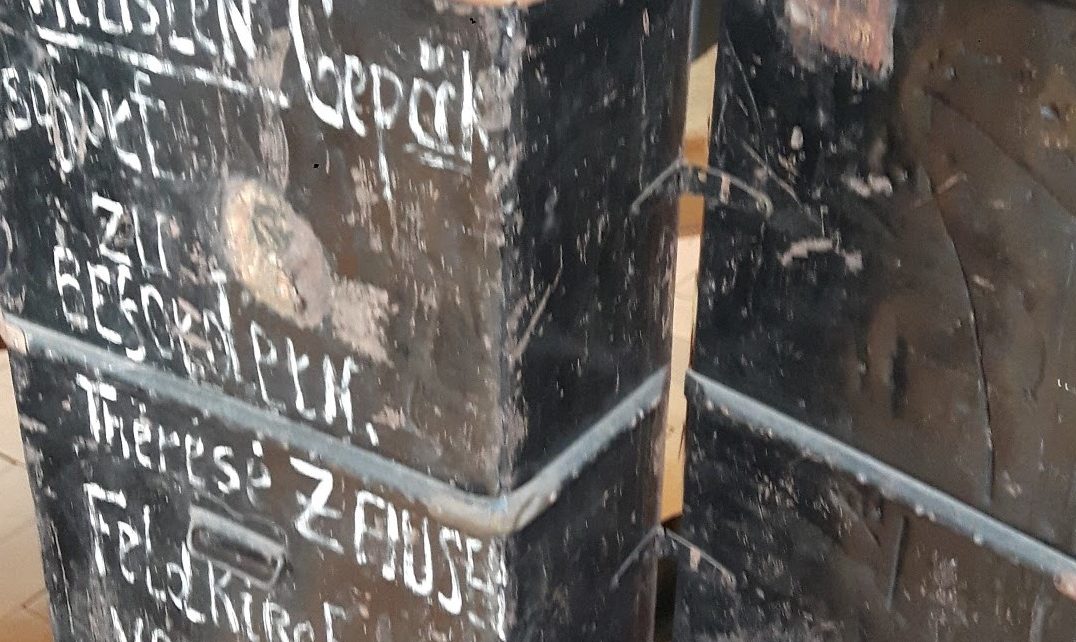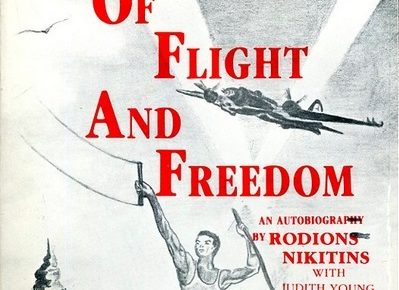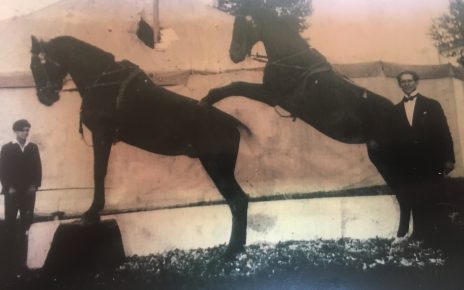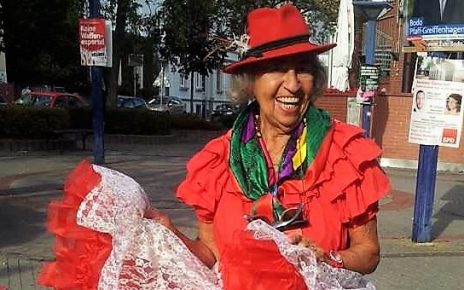Therese Zauser was born on December 4, 1910 in Feldkirch/ Austria. Her father Johann was the court clerk’s chief director at the Feldkirch Public Prosecutor’s Office. In his spare time, he was a passionate angler and therefore also chairman of the Fisheries District Committee. Her mother Theresa was a housewife and part-time zither teacher. Therese was the youngest of 3 children. Her sister Marianne, who was 10 years older, married Robert Weihs, an administrative lawyer, in 1922. Her brother Karl first did a commercial apprenticeship, which he exchanged ultimately for a career as an internationally acclaimed trapeze artist, among others in the circus Sarassani from Dresden.
Therese had a very sheltered childhood. From early on she was a member of a youth theater group with a great affinity for dance. She was a very literary and artistic person. Likely because of that, Therese followed in her brother’s footsteps and, after a good school ingenuous education, she started to train juggling and dancing.
In 1932 Therese had her first solo show, which gave her the opportunity to travel through Germany, Austria and the former Czechoslovakia. However, it is not known where she got her engagements from. Sources mention the magazine “Gazette d’Orients” as a possibility and an agency that booked her with her solo program. What is known for sure and at the same time special for this time period, was that Therese was always travelling on her own.
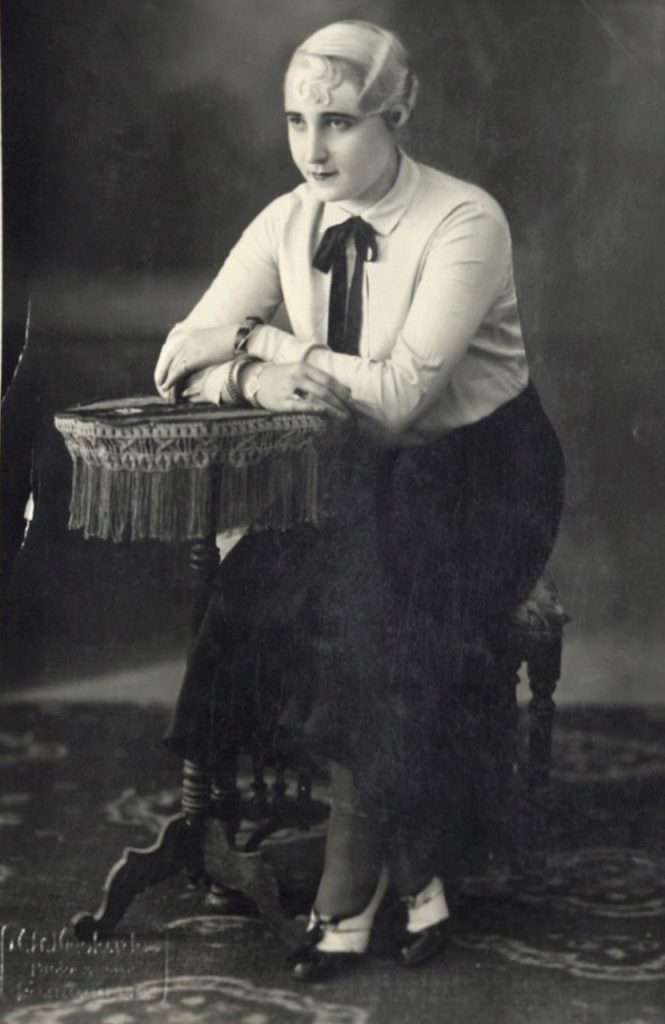
By courtesy of municipal library of Feldkirch
Therese’s journey continued towards Yugoslavia, which eventually developed into a 4-year tour through the Middle East and North Africa. At the time, Therese referred to herself as “Danseuse et chanteuse fantaisiste” [trans.: whimsical dancer and singer] and performed with the stage names Therese Judith Jansen and Judith Jessie Zauser. The artist’s life was/is a strenuous one. The shows usually lasted a few weeks, fees were only paid at the performances itself and she had to create new costumes, dances and shows on the road. But it seems she successfully mastered this challenge, as she was present in the midfield of this world. Since the cohesion of the Zauser family was very strong, the postal traffic was also very lively. Over a hundred letters and postcards are still preserved and give an impression of Therese’s life as an artist and the exotic places she went to.
Probably the most important places were among others, Sophia (Bulgaria), Izmir (Turkey), Nicosia (Cyprus); Port Said, Alexandria, Cairo, Suez (Egypt); Damascus (Syria), Baghdad (Iraq), Tehran (Iran), Malta, Oran, Algiers (Algeria); Casablanca, Fez, Tangier (Morocco). Unfortunately, these engagements came to an end after the Nazis came into power in 1938. On September 17, 1938, Therese wrote to her brother Karl, ” Seit ich Deutsch geworden bin, habe ich nichts mehr zu lachen. ” [trans.: Since I became German, I have nothing left to laugh about.]
Therese went to neutral Portugal after the outbreak of the war in 1939. There, however, she had few appearances with low fees. The following year, she had to leave the country after being arrested. She cited a “clash in a bar” as the reason for her arrest. Since she lacked the money for a ticket to leave the country, Therese spoke to the German embassy in Lisbon on 8.10.1940 in order to receive money for her departure. Her request was approved, and she was paid the travel expenses.
She stayed briefly in the city of her childhood Feldkirch in Austria but moved on soon. In January 1941 Therese performed in the “Chapeau Rouge Tabarin”. Since the war only a few opportunities for shows were offered. Therese had to look for a new orientation in her life elsewhere if she wanted to stay in the entertainment industry. Unfortunately, her attempts to work in film were unsuccessful. For some time she also played with the idea to buy a lion, so she contacted the animal-trainer Fritz Müller-Wilson, who offered her an apprenticeship to become a wild cat trainer. However, this contact abruptly broke off. The reasons for this are not known.
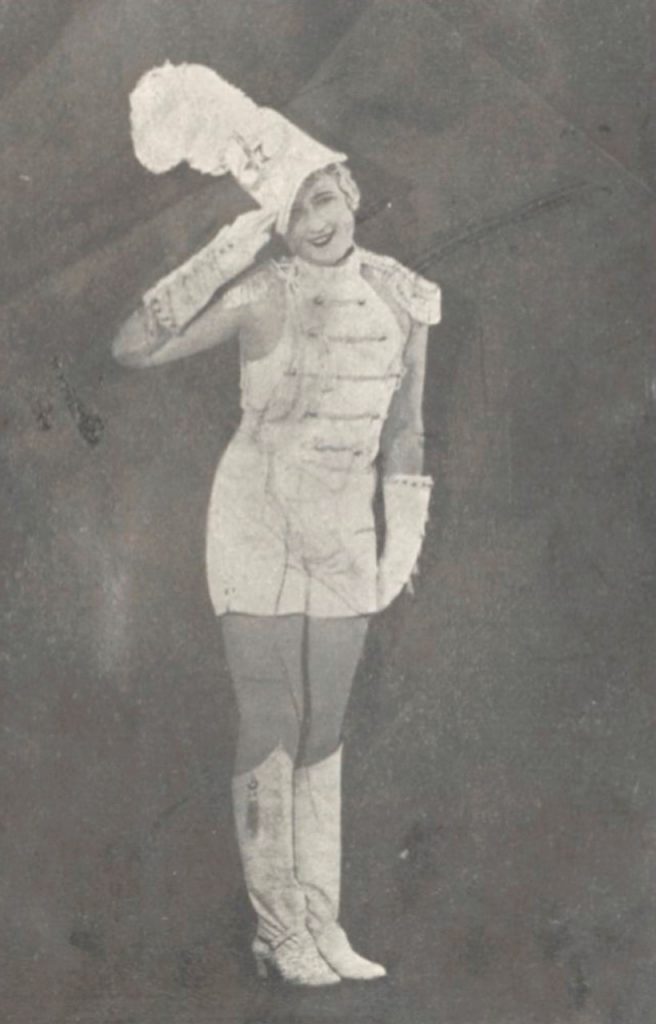
On 22.8.1941 Therese was arrested by the Gestapo in Saarbrücken for “antisocial behavior”. She wrote anxiously to her brother Karl that she had probably made the following statements while in a drunken state: “Man bringe mich nicht in die Munitionsfabrik” [Nothing could make me work in the ammunition factory] and “Die Briten würden den Krieg gewinnen” [The British are winning the war]. She was reported by four people. Therese had never positioned herself politically before, nor had Therese ever spoken about politics in her letters to her mother. After Therese’s imprisonment, however, her mother wrote about her astonishment about her daughter’s behavior, as she had previously been „ganz für Deutschland eingestellt war“ [completely set for Germany]. A short time later, Therese’s mother died.
Therese was transferred to the Hamburg-Hütten police prison, from where she wrote her condolence letter to her father about her mother’s death. In the same letter, she asked her father not to write to her because her future whereabouts were uncertain. Therese was finally transferred to the notorious Ravensbrück concentration camp near Fürstenberg in Mecklenburg on 25.10.1941. This gave her the opportunity to ask her father about her belongings at the Wilhelmshafen police station. The father managed to get her performance suitcase back. In this suitcase her most important possessions were stored: costumes, handbags, letters and a diary that Therese kept until she was 20 years old. Her inheritance has been preserved to this day.
In the correspondence between Therese and her family, a letter to the father shows the censorship of the concentration camp Ravensbrück, since a part at the end of the letter was made illegible, but then to be finally released with a stamp. On 11.2.1942 Therese Zauser was murdered in Ravensbrück concentration camp.
The Nazi regime and her death also had consequences for Theresa’s family. The father, devastated by his daughter’s death, died of a brain stroke just two months later. Her brother-in-law Robert Weihs struggled to find his place in the Austro-fascist state and National Socialism and lost his job as a lawyer in the Innsbruck Chamber of Labour in 1934. He was denounced, persecuted and died of mental derangement in 1943. Therese’s siblings Karl and Marianne survived the war. But Karl’s life also ended tragically. Karl was too old to continue working as a trapeze artist. He appeared from time to time as a magician at children’s parties and drank himself to death in 1967. The sister Marianne joined the Grail Community and committed herself to the Kabbalistic. She died on 31.8.1982 childless.
A special feature of Therese’s story is the possibility of understanding the developments of the war and its influence on the life of the artist because of her letters. In recent years, there have been readings of her letters in Austria, as well as artistic reproductions of her story in the form of a play and a contemporary short film.
Author: Johanna Prantz
Main sources: https://www.feldkirch.at/fileadmin/user_upload/document/Stadt/Feldkirch_aktuell_PDFs/3-2018_Feldkirch_feiert.pdf, https://www.ravensbrueckerinnen.at/?page_id=6104, https://www.kulturzeitschrift.at/kritiken/theater/bin-noch-in-tanger-und-darf-nicht-reisen-therese-die-geschichte-der-oesterreichischen-taenzerin-therese-zauser-ein-biographisches-multimediales-theaterprojekt-mit-internationalen-verbindungen, https://www.vn.at/vn/2019/09/26/ein-koffer-und-ein-ganzes-leben.vn, https://www.vol.at/ein-beruehrendes-frauenschicksal/3332800
Featured image (above): Artist case of Therese Zauser, by courtesy of Brigitte Walk
